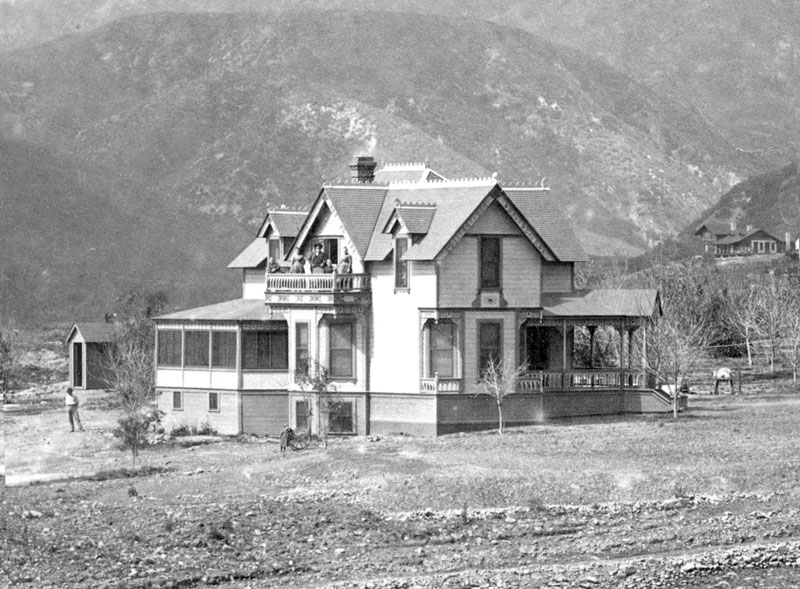Altadena Heritage: 30 Years of Activism

History
Founded as a Committee of the Altadena Town Council in the mid-1980s, the issue sparking Heritage’s formation was the destruction, and/or imminent plans to tear down and redevelop many historically significant homes and properties. The prospect of losing so much of what makes Altadena special was an emergency of that era that rallied a group of committed residents. It was recognized that a lack of any historical designation or protective ordinance for unincorporated areas of Los Angeles County often put the best interests of Altadena in peril. The first committee of Altadena Heritage decided to study the problem and design strategies to empower us to advocate for our town’s heritage and to preserve neighborhood integrity.

In 1987, the Heritage Committee had its first big success in saving Scripps Hall (now the Waldorf School) on Mariposa Street from subdivision into a housing tract. Highview, the much grander William Kellogg home next door, had been sold in 1959, torn down, and met this fate — and Scripps was about to go on the chopping block. At that time, members determined that forming a 501 c-3 organization, separate from the Town Council, would be the best vehicle to accomplish the purpose the group articulated: to identify and seek the protection of Altadena’s significant architectural, historical, cultural, and natural resources. The application to the State of California to become a non-profit community benefit corporation was approved February 24, 1989.
Over the years Altadena Heritage’s purpose has remained constant. The organization was designed to be one whose strategies could evolve; thus our emphasis and activities have responded to changing needs over 25 years without losing sight of basic goals set in 1987.
An immediate concern back then was to complete a survey of Altadena’s architectural resources before too many more significant ones were lost. Much early effort went into raising money for and conducting this, and Altadena Heritage was among the first organizations in California to digitize such information. Efforts went into identifying and saving existing paper files on Altadena properties as well, such as those from the William Wilson Real Estate Agency, which operated from after the turn of the century through the 1980s. Thus Altadena Heritage’s archives have also evolved into a “collection of collections” available to the public for research. These have been housed in the Altadena Heritage office within the Community Center, where we moved when it opened in 2003. The board takes stewardship of our data very seriously, and in 2011 is in process of migrating it to a new and sustainable digital platform that eventually will be launched on the California Historic Resources Inventory Database (CHRID).

Over the years Altadena Heritage’s purpose has remained constant. The organization was designed to be one whose strategies could evolve; thus our emphasis and activities have responded to changing needs over 25 years without losing sight of basic goals set in 1987.
An immediate concern back then was to complete a survey of Altadena’s architectural resources before too many more significant ones were lost. Much early effort went into raising money for and conducting this, and Altadena Heritage was among the first organizations in California to digitize such information. Efforts went into identifying and saving existing paper files on Altadena properties as well, such as those from the William Wilson Real Estate Agency, which operated from after the turn of the century through the 1980s. Thus Altadena Heritage’s archives have also evolved into a “collection of collections” available to the public for research. These have been housed in the Altadena Heritage office within the Community Center, where we moved when it opened in 2003. The board takes stewardship of our data very seriously, and in 2011 is in process of migrating it to a new and sustainable digital platform that eventually will be launched on the California Historic Resources Inventory Database (CHRID).
Altadena
Altadena is an unincorporated community of 43,000 sited on an outwash plane beneath the abruptly rising San Gabriel Mountain Range and between the Arroyo Seco and Eaton Canyon.
Altadena is 13 miles northeast of the city of Los Angeles and directly north of the city of Pasadena. Founded at the time of Southern California’s land boom of the 1880s, the town’s uniqueness derives from a distinct history, “live free or die” culture, and stunning physical setting.
Architecturally diverse with significant examples of every style of home from modest Craftsman bungalow to Italianate mansion and Modernist gem–Altadena has also been a racially diverse community since the 1960s.

